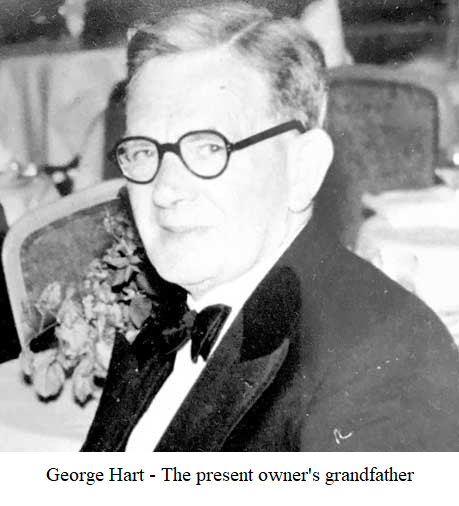A Practical Guide From a Long-Established Jeweller
People often bring us rings they’ve inherited or discovered while clearing out old jewellery boxes, hoping to learn where the piece came from and how old it might be. After more than two centuries in the trade, we’ve learned that every ring tells a story but those stories don’t always reveal themselves straight away.
If you’re curious about the age or authenticity of a vintage or antique ring, this guide will walk you through the clues jewellers look for every day. Some signs are obvious; others are incredibly subtle. And although there’s no single “magic test,” understanding these details will help you identify whether a ring is genuinely old or simply made in an older style.
(If you’d like to browse original, authenticated pieces, our collection is here: https://vintagetom.co.uk/collections/vintage-antique-rings)
Vintage vs Antique: What the Words Actually Mean
People use these terms loosely, but in the jewellery world they have specific meanings:
Antique
A ring that’s roughly a century old or more. That usually covers:
-
Victorian designs
-
Edwardian pieces
-
Early Art Deco jewellery
These rings were almost always handmade. You can often see tiny quirks in the settings or the stone shapes details a machine wouldn’t produce today.
Vintage
A broad term that applies to pieces from the 1920s up to the late 20th century. You’ll find everything from geometric Art Deco rings to bold mid-century cocktail styles under this umbrella.
Vintage rings tend to reflect the fashions of their decade, so the style itself is often the biggest clue to when it was made.
1. The Craftsmanship Tells You More Than Any Marking
One of the quickest ways to distinguish an older ring from a modern reproduction is to simply look at how it was made. Older jewellery wasn’t mass-produced; every bench jeweller had their own habits and ways of doing things.
Here are a few era-specific hints jewellers use:
Victorian (1837–1901)
Many Victorian rings have a warmth to them thicker gold, deeper engravings, and gemstones that were cut by hand. You might see rose-cut diamonds, old mine cuts, or colourful stones like turquoise and garnet. The metal work often features scrolls, flowers or symbolic motifs popular at the time.
Edwardian (1901–1910)
Edwardian rings often feature platinum-topped gold during this era. They can look incredibly delicate, almost lace-like, with fine filigree and tiny milgrain edging. The diamonds from this period tend to be Old European cuts, which have a very romantic glow compared to modern stones.

Art Deco (1920s–1930s)
Very distinctive. Think geometry squares, octagons, symmetry, sharp lines. When it comes to Art Deco rings, geometry rules the design language. You might see French-cut sapphires or rings where the entire design is built from clean, architectural shapes.
1940s–1960s
Rings from this period often feel bolder and more sculptural. Yellow gold made a strong return, and many pieces were custom-made, which means almost no two look alike.
2. The Stone Cut Is One of the Easiest Age Indicators
Gemstone cutting has changed dramatically over the last two centuries. Just looking at the shape and proportions of a diamond or coloured stone can give away its era.
-
Old Mine Cut: Squarish, high crown, hand-cut facets. Common in 1800s pieces.

-
Old European Cut: Early form of the round diamond; soft, glowing sparkle.

-
Transitional Cuts: Seen around the 1930s–40s; a bridge between old cuts and modern brilliants.
-
Modern Brilliant: Perfect symmetry, machine precision generally post-1940s.
If the diamond is perfectly symmetrical and very bright, it’s usually not an antique.
3. About Hallmarks: A Helpful Clue, But Not Essential
This is an area where people often get confused.
A lack of hallmarks does not mean a ring isn’t antique.
You can have a perfectly genuine 19th-century ring with no marks at all. Reasons include:
-
Many makers didn’t hallmark their work before the 1970s
-
Heavily worn rings lose their marks
-
Foreign-made pieces didn’t follow UK hallmarking rules
-
Some antique settings were replaced or altered later
Hallmarks are lovely when they’re present, but jewellery experts rely more on the piece’s construction, metal testing, the stone cut, and stylistic clues.
4. The Setting Style Can Narrow Down the Era
Different periods had very specific preferences for how stones were mounted.
-
Victorian: Tall claws, closed-back settings for coloured stones
-
Edwardian: Platinum-topped gold, intricate filigree
-
Art Deco: Clean, boxed settings; symmetrical layouts
-
Mid-Century: Chunkier, sculptural settings, sometimes with illusion mounts
If the stones and setting don’t match the typical style of an era, it may have been altered or remounted later.
5. How to Spot a Modern Reproduction
There’s nothing wrong with a modern ring made in an antique style but it shouldn’t be mistaken for the real thing.
Signs of a newer piece include:
-
Perfectly even symmetry
-
Bright white rhodium plating
-
Very lightweight construction
-
Modern brilliant-cut diamonds
-
Decorative motifs that feel “too fresh”
Reproductions often look almost too perfect. Genuine antique pieces carry a sense of age and a few small quirks.
Why Older Rings Are Becoming More Sought After
People are increasingly drawn to vintage and antique jewellery because:
-
The workmanship is incomparable
-
They’re a sustainable, recycled form of luxury
-
No two pieces are identical
-
Many stones used in older rings simply aren’t cut that way anymore
-
They often hold or increase their value over time
An antique or vintage ring feels like owning a piece of history rather than just an accessory.
“Interest in genuine pre-owned jewellery has grown significantly in recent years, as we explored in our recent blog post the global antique jewellery market in 2025
Explore Authentic Vintage & Antique Rings
Every ring in our collection has been hand-selected for character, condition and craftsmanship:
👉 https://vintagetom.co.uk/collections/vintage-antique-rings
If you ever need help identifying a ring, you’re always welcome to get in touch. Helping people understand the stories behind their jewellery is one of the best parts of what we do.





